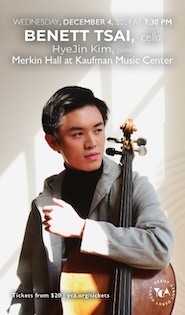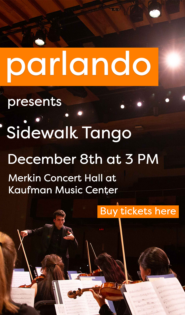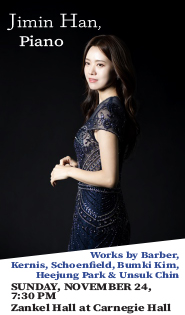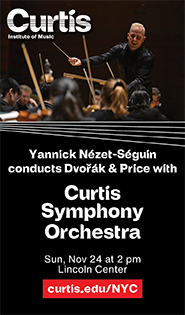Yarn/Wire provides stellar advocacy for mixed Meadowcroft premieres
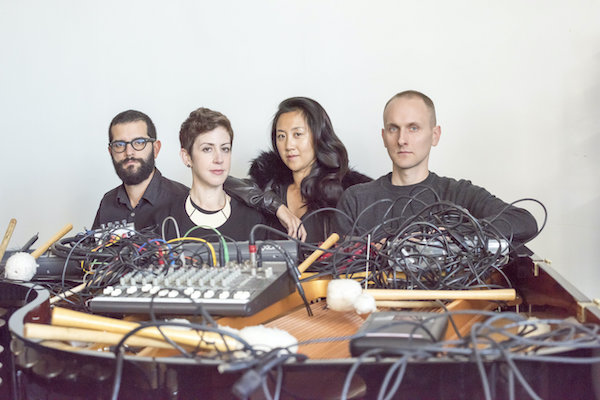
Yarn/Wire may well be the most important new music ensemble on the classical scene today. The group’s unique instrumentation of two keyboardists (Laura Barger and Julia Den Boer) and two percussionists (Russell Greenberg and Sae Hashimoto) would seem like a limitation but it offers an enticing and constructive challenge for composers, restricting some technical possibilities in a way that opens up fresh, new paths. The new pieces the group commissions are consistently imaginative, and inventive with exacting balance, clarity, and form.
Thursday night at Miller Theatre Yarn/Wire brought even more new music to the stage—two world premieres from Thomas Meadowcroft, commissioned by Miller for their Composer Portraits series. These pieces, Forward Through Circles and Another Children’s Television, were exceptions to the usual Yarn/Wire experience—music that used the ensemble in conventional ways, managing time, sticking with diatonic harmonies, and using percussion in standard ways. That in and of itself was no issue, but the results were a literal mixed bag, with one fulfilling, meaningful work and another that was insignificant, if not off-putting.
Meadowcroft is an Australian composer who, as described in the program notes, uses the memories of his upbringing and the Australian cultural world around him as a guiding foundation in his work. In this concert—and in his other works—one of the cornerstones is the sounds of electronic keyboards, especially the Hammond and Farfisa organs and the Fender Rhodes electric piano (recreated Thursday night via digital sampling and synthesis). That’s memory as compositional process; these are instruments which, through their exposure in popular music and evolving production techniques, signify specific decades, even years, in the listeners mind. It’s a shared pool of nostalgia into which the composer invites the listener.
Nostalgia is tricky business though, like sculpting with mercury. While it can be evocative and offer immediate psychological satisfactions, such devices are also too easy to use, can be confining rather than expansive, and are prone to sentimentality.
The first piece, Forward Through Circles, sidestepped this danger completely, using nostalgic sounds as just one of many instrumental building blocks in a larger form.
The composition was a series of cadences supposedly formed around the structure of the turn-around at the end of a song, but without the strong dominant chord feel that anticipates the downbeat on a tonic. Any doubts about how the harmony would function quickly vanished as the chords floated by in slow sequences, drifting very much like clouds on a steady breeze. And like clouds, the mostly major-key feel was colored by the occasional seventh or minor chord, the timbres gradually shifted from bright and shimmering to grainy and dark, and back again.
The effect was marvelous, beautiful sounds played at a controlled pace, with Yarn/Wire members sensitive to dynamics and spaciousness, while always in complete coordination. At around a half-hour duration, one would gladly have listened to the music go by for several more hours.
The other premiere, Another Children’s Television, was first a deep disappointment and then a nearly infuriating one. It was all nostalgia, all the time, but a specifically artificial one—Meadowcroft wrote original themes that to him felt like music he heard from children’s cartoons and other television shows when he was growing up. That’s an intriguing artifice that has been explored with great success by musicians like John Zorn and Chick Corea. But their music is sincere and guides, while Another Children’s Television started with fakery and grew increasingly phony.
This was clearly not Meadowcroft’s intent, but one was also certain that the composer could not hear the dangers of nostalgia. The first sound was a combination of the signals that precede the audio track on a television broadcast and the cracked of a phonograph needle on an LP. That latter has already been used to death as a cliché in ambient music from the last decade. In the classical context, it may still be fresh, but by trying to recreate television music, Meadowcroft placed himself in a much broader cultural context.
The actual music explored the aesthetics of the banal, dull and obvious music made with skill but rudimentary form, as if the composer were trying to show he could be both common and show he is an elevated artist looking down at such devices.
While the tunes were pithy, there were also simplistic, condescending to the craft it took to make themes that worked for Loony Tunes, or Taxi, or even to announce a news program. Heavy on the electronics, the nostalgic fetishization of analog technology was also misguided.
It was something new when Philip Glass used Farfisa organs in his ensemble, but that was 50 years ago, and as much an economic need as an artistic choice. And while Glass still plays his original instrument on occasion, there was nothing at all analog about the Yarn/Wire setup, since the hip sounds were digital recreations. That was ironic, but not in the way Meadowcroft likely intended.

